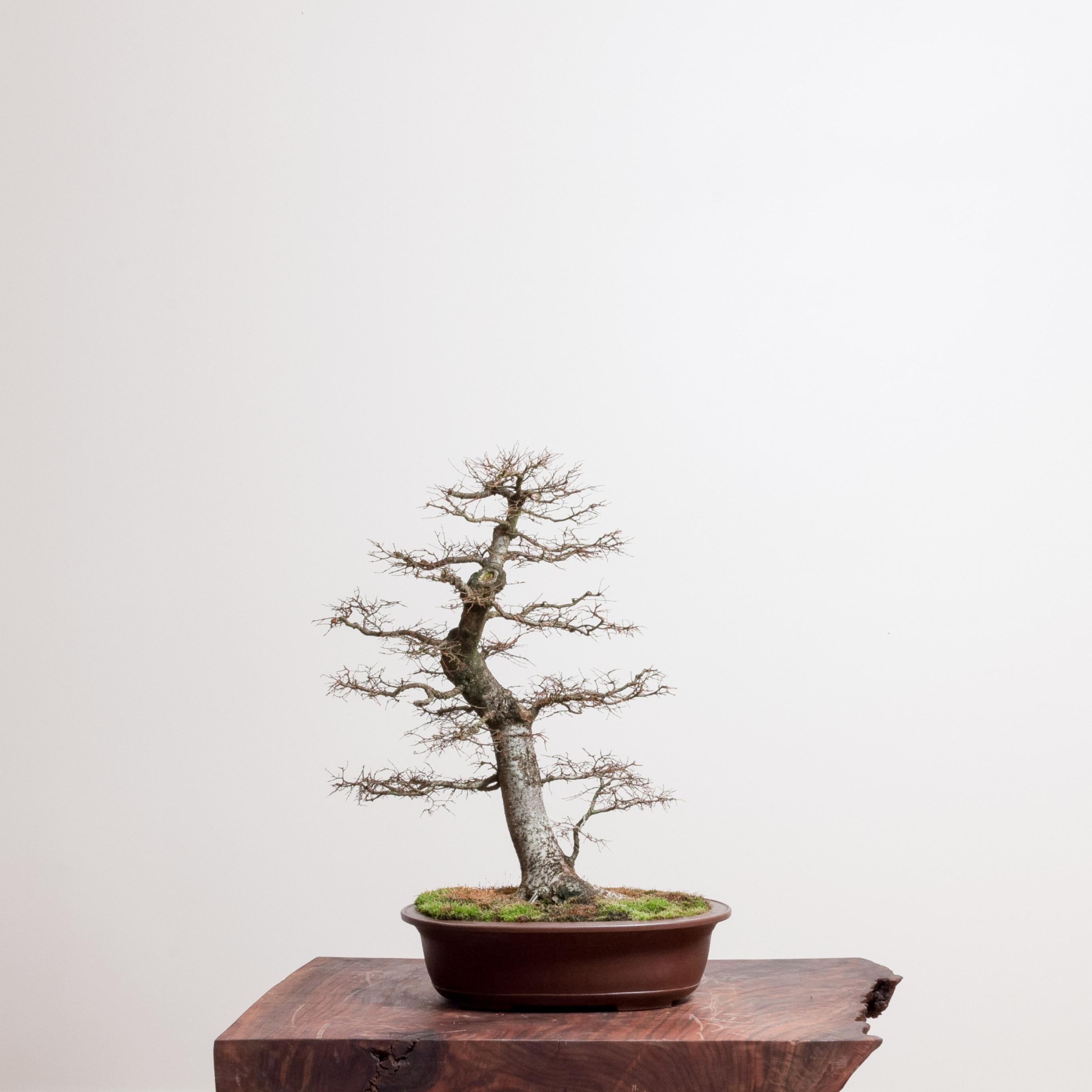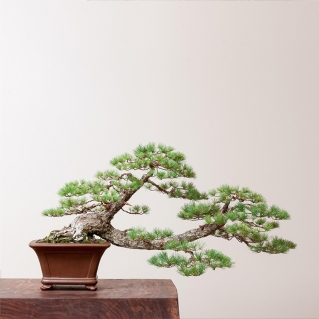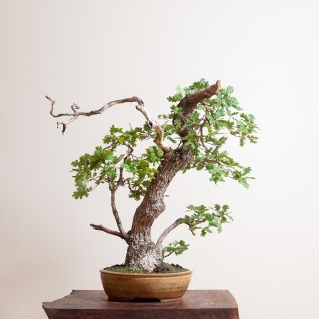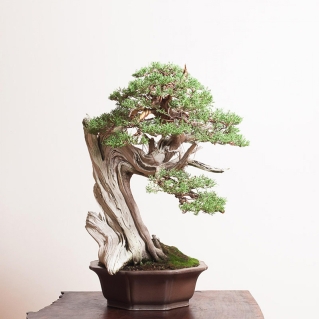Zelkova Bonsai

General Information
Zelkova bonsai—Zelkova serrata—is an incredibly beautiful, smooth, broadleaf deciduous with pointed, serrated leaves. This species, which is derived from Japan, has the ability to accommodate almost any shape and bonsai form.
It is vigorous, has fascinating fall color, and can be managed to create a spectacular bonsai tree.
Caring for Zelkova Bonsai
Watering
Zelkova is a very thin-leaved broadleaf deciduous that is highly transformational and productive. Photosynthetically speaking, Zelkova should not dry out—they are on the water heavy side of the balance of water and oxygen.
You must be diligent in ensuring that the Zelkova does not dry out, but it is also not overwatered—the soil should be damp, but not sopping wet, before watering.
Sun Exposure
Zelkova bonsai should be kept in full sun in the spring and fall—with the exception of extreme spikes in temperature.
During the summer, or in “off-season highs,” Zelkova should be placed in semi-shade during the hottest parts of the day. Otherwise, the leaves will become dehydrated and burn, weakening the Zelkova before it has the chance to recover its energy from the soft spring growth.
Temperature
Zelkova bonsai tolerate tremendously hot temperatures when under sufficient shade. It can cool itself in temperatures well over 100°F, and generally thrives in temperatures between the mid to high 80s and low 90s.
When Zelkova is exposed to 100°F or higher consistently, you may begin to see burnt foliage mass, resulting in a weakened tree over time.
In the colder months, Zelkova should never endure temperatures below 20°F. Anything under that may result in the loss of fine branches.
Pruning
The best time to prune a Zelkova is when it is healthy during the spring. Zelkova bonsai need to be partially defoliated and pruned back to buds to direct energy from the outer tips of the branches to the interior of the branches—this helps maintain the finer interior density that Zelkova is prized for.
Managing the outer exterior strength is important so that the interior branches can be supported. This is accomplished through partial defoliation and pruning back to two nodes in the post-flush harden state.
In the fall, Zelkova responds incredibly well to:
● Leaf drop pruning as the leaves drop after the late fall
● Selective pruning of the tips back to two pieces of ramification to get even distribution, manage the aesthetic and growth without compromising winter hardiness, and enhance the strength and quality of the interior branching and their durability over winter.
Zelkova can be pruned in the spring before the flush of growth for development and secondary purposes, including initial styling or management of the bonsai’s structure.
Wiring
Wiring Zelkova should be done in the fall, winter, or spring before the buds open.
Young twigs and branches often grow crooked and can be corrected into a broom style silhouette. Young branches and twigs can be tied together in bundles, promoting the broom shape—removing the tie in the early spring before the buds begin to open.
Repotting
Zelkova is a non-sheen-based, deciduous, broadleaf tree, so you can come up underneath the trunk of Zelkova, remove all of the field soil, and bare root the species during initially handling.
You can remove downward growing roots to create a very shallow soil profile allowing Zelkova to expand its roots laterally.
Zelkova does not like ultra-shallow containers. They need deep containers to maintain the balance of water and oxygen—conditions that allow Zelkova to sustain the fine ramification and its canopy and reduce the risk of losing finer branches.
Propagation
The Zelkova can be propagated from air layering, seeds, and cuttings. Because of the effortless propagation from seedlings and cuttings, they root well.
Zelkova are very vigorous, aggressive-growing, and rapid callus-forming trees, giving them a strong propagation capacity.
Pests/Disease
Zelkova bonsai suffer from common pests and diseases that most broadleaf deciduous species deal with, primarily spider mites in the foliage mass. Caterpillars and leaf rollers may also deform the foliage mass.
Zelkova Bonsai FAQS
Die back on a Zelkova bonsai can happen for several reasons:
1. The Zelkova bonsai was subjected to cold temperatures—20°F for bigger Zelkova bonsai, and 25°F for small to medium size.
2. It has been kept in too shallow of a container, cannot be cultivated, the balance of water and oxygen has not been met, and the fine roots that support fine ramification of a Zelkova will not occur.
To reduce the risk of Zelkova bonsai dying back, you have to leave a stub on the heavy branches when they’ve been pruned. You may also need to cut back interior branches to change the water flow of the Zelkova, forming a collar at the junction of the branch that will allow you to reduce or remove it.
Another important consideration is that, much like all other high water mobility broadleaf deciduous trees, you should avoid cutting back too big or thick of a structure too quickly. Otherwise, it cannot adapt its water flow and will die back and form dead portions on its trunk.



